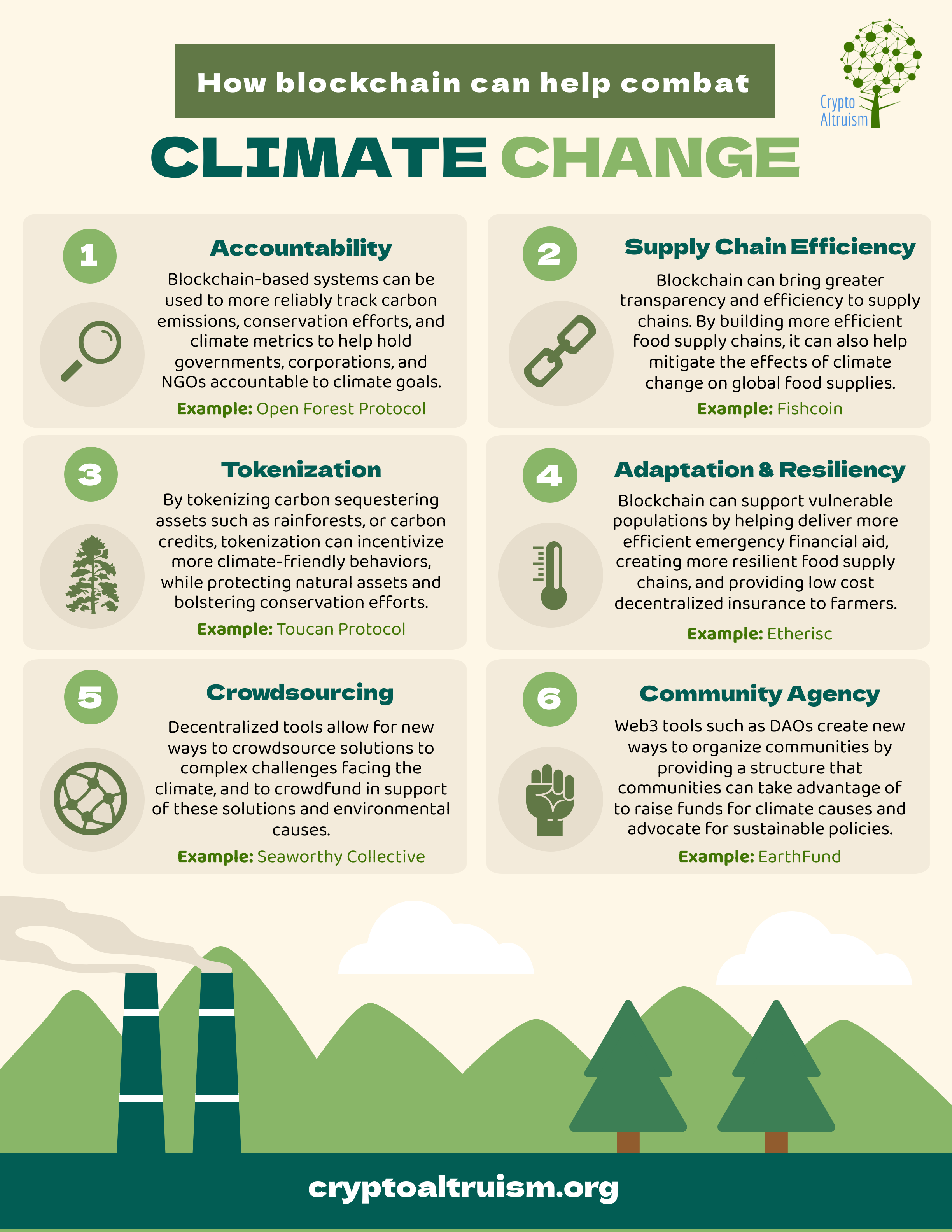INFOGRAPHIC: How blockchain can help combat climate change
Accountability
Blockchain-based systems can be used to more reliably track carbon emissions, conservation efforts, and climate metrics to help hold governments, corporations, and NGOs accountable to climate goals.
Example: Open Forest Protocol
Supply Chain Efficiency
Blockchain can bring greater transparency and efficiency to supply chains. By building more efficient food supply chains, it can also help mitigate the effects of climate change on global food supplies.
Example: Fishcoin
Tokenization
By tokenizing carbon sequestering assets such as rainforests, or carbon credits, tokenization can incentivize more climate-friendly behaviors, while protecting natural assets, and bolstering conservation efforts.
Example: Toucan Protocol
Adaptation & Resiliency
Blockchain can help vulnerable populations by helping deliver more efficient emergency financial aid, creating more resilient food supply chains, and providing low cost decentralized insurance to farmers.
Example: Etherisc
Crowdsourcing
Decentralized tools allow for new ways to crowdsource solutions to complex challenges facing the climate, and to crowdfund in support of these solutions and climate causes.
Example: Seaworthy Collective
Community Agency
Web3 tools such as DAOs create new ways to organize communities by providing a structure that communities can take advantage of to raise funds for climate causes and advocate for sustainable policies.
Example: EarthFund
Like what you’re reading? Consider contributing to Crypto Altruism so we can continue putting out great content that shines a light on the good being done in the crypto and blockchain community.

